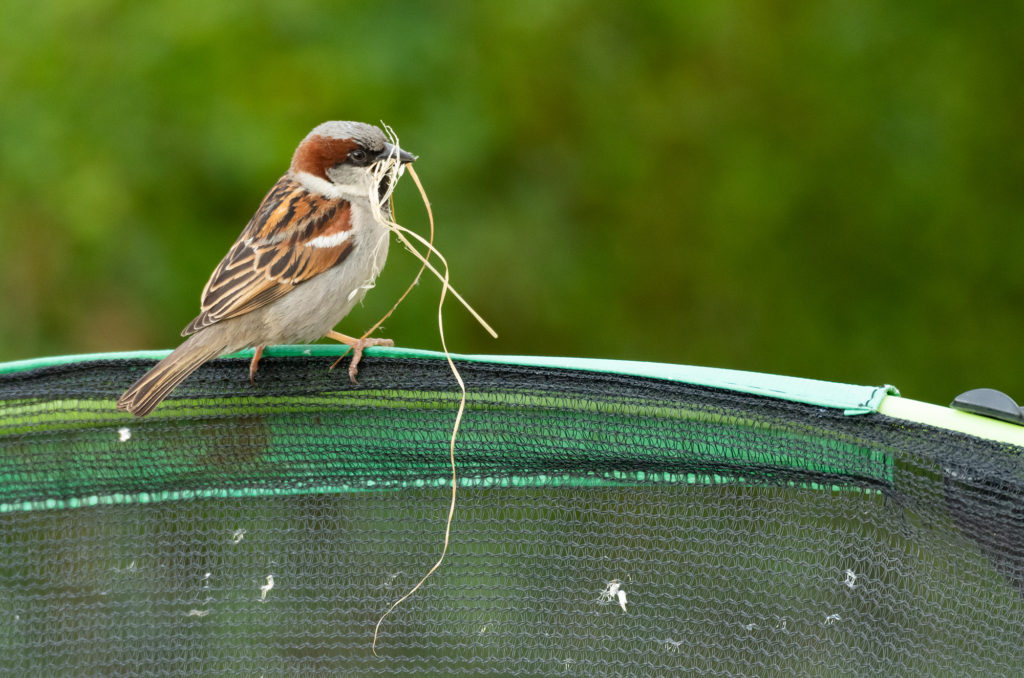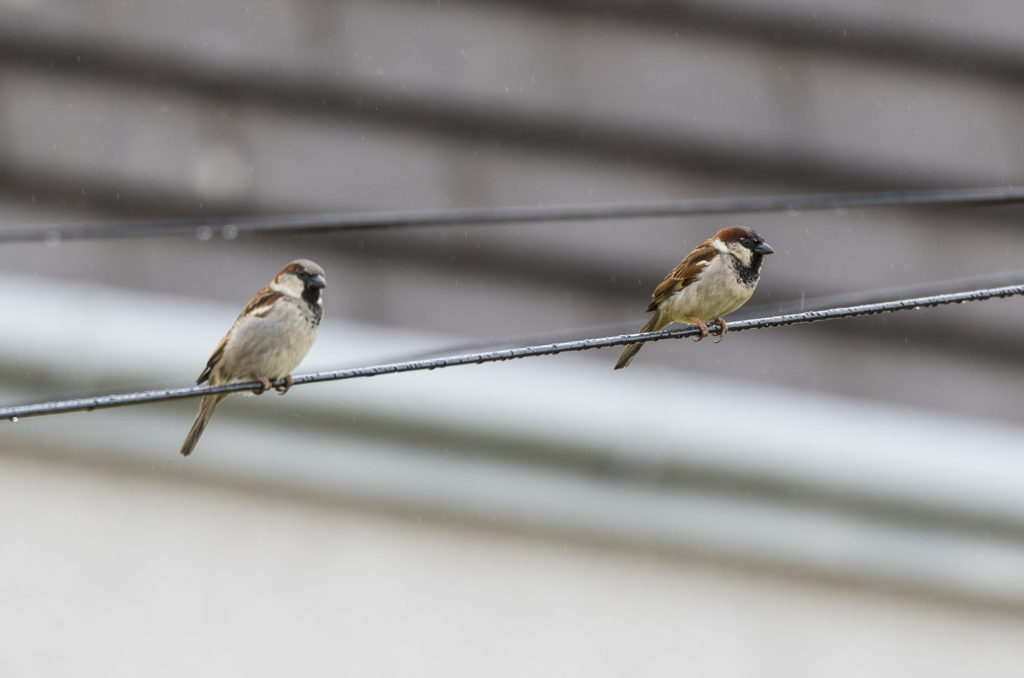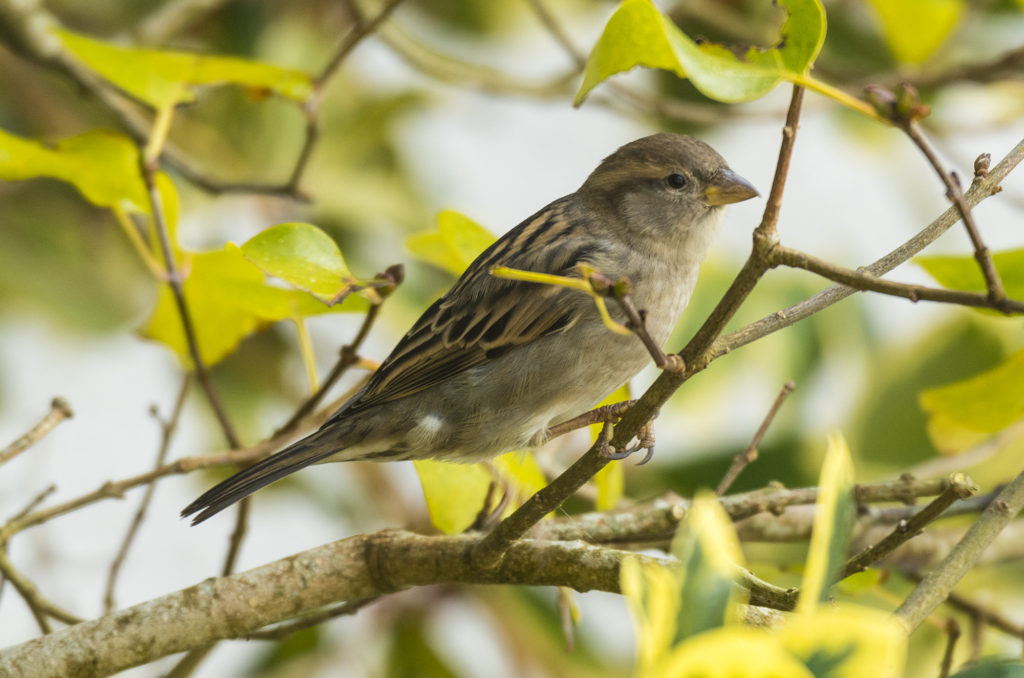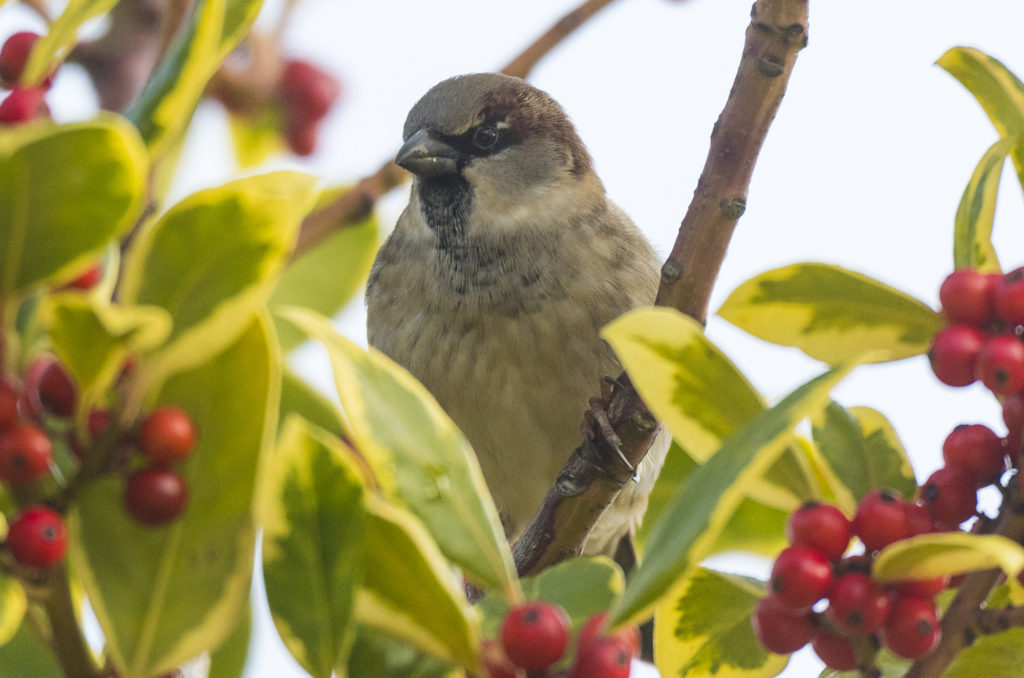The humble house sparrow has been crowned top of the UK (bird) table for the 19th year in a row. I say humble but this bold little bird always succeeds in making its presence felt.
House sparrows are opportunistic and can happily live alongside us, having colonised much of the world. They love our messy, wasteful nature. They pick at the tiny crumbs that we drop. They utilise nooks in our buildings to nest in. And boy, do they love it when our gardens are full of feeders and other paraphernalia that they can use to their advantage, including trampolines.

I captured the image above of a male house sparrow perched on our neighbour’s trampoline from our bedroom window back in June. They often use the frame as a perching point between trips to nearby gardens.
The male house sparrow doesn’t need much in the way of a breeding territory to attract a mate. A nest hole is a requirement, but how energetic he is when defending it will ultimately determine whether the female chooses him. Oh, and there’s the small (or large) matter of the size of his bib to consider. The male house sparrow’s black bib is his badge of honour, and the larger the bib, the more attractive he will be to the female. Research has shown that males with larger, blacker bibs painted on them behaved more boldly, so plumage is important to both sexes for confidence in a potential match. I guess it is a bit like wearing your favourite outfit to a party; you feel more confident and comfortable and, in turn, you are more attractive to others.

I love watching these birds tearing up the dry grass in our garden to use as nesting material. The nesting season is from April to August and, while most birds lay two or three clutches, fourth clutches have been recorded in years when conditions are favourable.
I have been doing my day job from home for the past two years because of the pandemic. I remember that, particularly during the anxieties of the first few weeks of working from home, I felt comforted by these birds buzzing about in the tree outside the window of my makeshift office. Their cheeping and peeping was a reassuringly persistent soundtrack to another worrying day working from the dining room table. Their bright eyes focused on me from the outside world had provided companionship when human company was forbidden. Slightly less welcome is the insistent chatter from our gutters at ridiculous o’clock in the morning when we are trying to sleep, but we have got gradually used to their attempts at becoming our new alarm clock.

What’s harder to ignore than the flock of house sparrows outside your window at dawn? The trouble that this species is in. 1,778,764 house sparrows were seen in the citizen science count this year, but this is down 57.9% since 1979, with declines in rural and urban areas, and they are a Red listed species in the UK. There are many possible causes for the drop in numbers, including the ways our cities, gardens and parks have altered over time and the increases in predator species. However, it’s this plethora of potential problems which is making the situation harder to resolve. That said, there is a glimmer of hope; Breeding Bird Survey data have indicated recent population increases in Scotland, Wales and Northern Ireland.

House sparrows are fascinating to watch. Always on the move, these industrious and sociable little birds provide explosions of noise and bring endless energy to our parks and gardens. And that’s why, using research such as the BTO House Sparrow Survey, we must work out how to maximise the opportunities for these feisty birds to thrive across the UK, as they once did. It’s about time the house sparrow became a household name again.

